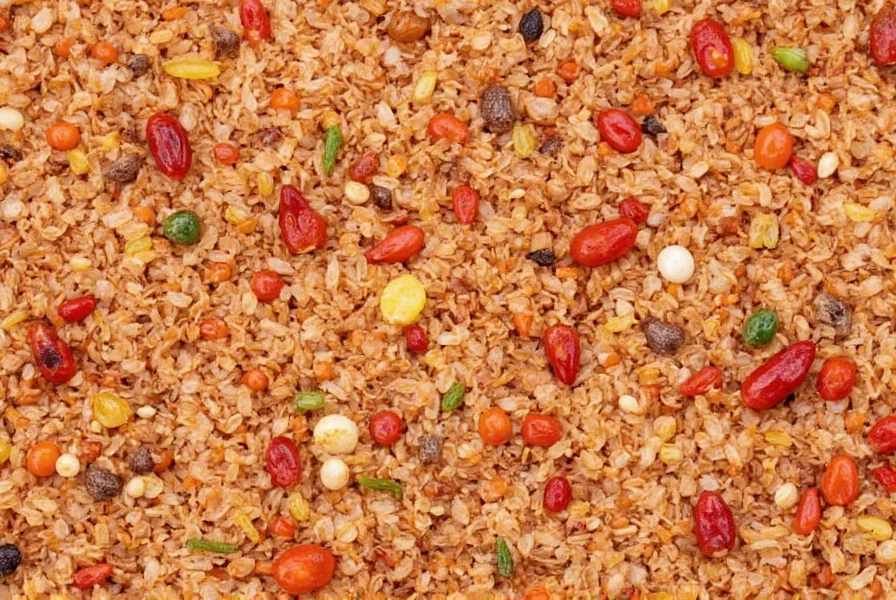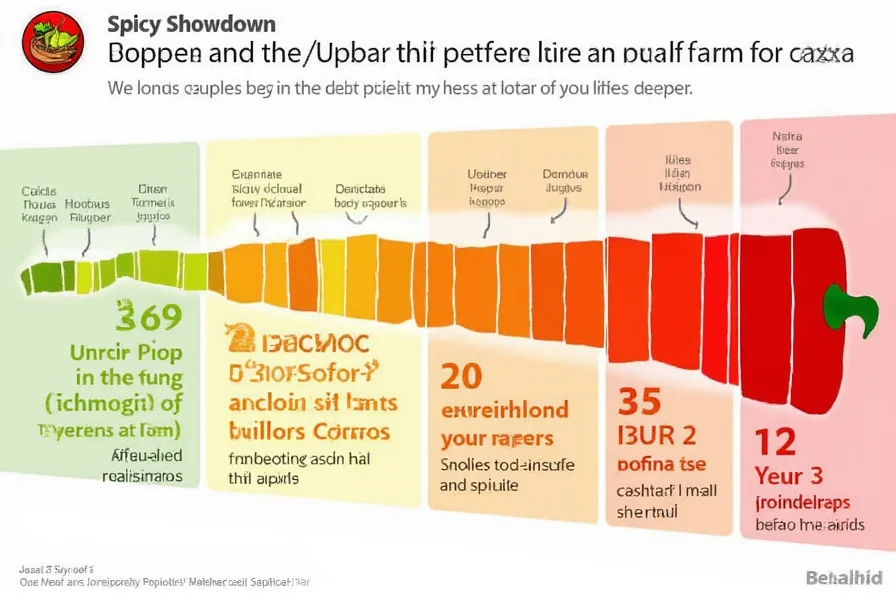Togarashi: The Spicy Secret Behind Japanese Cuisine
Table of Contents
What is Togarashi?
Togarashi, also known as Japanese chili powder or shichimi togarashi, is a versatile spice blend that adds a unique heat and flavor to many Japanese dishes. Unlike pure chili powders, togarashi is a mixture of various ingredients, including red chili flakes, sesame seeds, seaweed, and sometimes citrus zest. It's often used as a finishing spice, sprinkled over dishes just before serving to enhance both taste and aroma.

The key to togarashi's appeal lies in its balance of flavors—spicy, savory, nutty, and umami. This makes it more than just a heat source; it’s a complex seasoning that elevates the overall dining experience. Whether you're cooking at home or dining out, you might find yourself reaching for this spicy staple.
The History of Togarashi
Although togarashi has become synonymous with Japanese cuisine, its roots can be traced back to ancient China. It was introduced to Japan through trade routes and eventually evolved into its current form. By the Edo period (1603–1868), togarashi had become a popular seasoning in households and restaurants alike.
Over time, different regions in Japan developed their own variations of togarashi, incorporating local ingredients such as dried bonito, nori (seaweed), and even Sichuan pepper. Today, there are countless regional styles, each offering a slightly different flavor profile.
Types of Togarashi
There are several common types of togarashi, each with its own unique combination of spices. Here are some of the most popular ones:
- Shichimi Togarashi: The most widely known type, containing seven ingredients such as red chili, black sesame, white sesame, seaweed, orange peel, ginger, and poppy seeds.
- Kuro Togarashi: A darker version with more chili and less sesame, giving it a stronger, spicier kick.
- Kitsune Togarashi: Named after the fox (kitsune), this variety includes more orange peel and is slightly sweeter.
- Miso Togarashi: Infused with miso paste for a deeper, umami-rich flavor.
Each type offers a distinct experience, making it easy to experiment and find your favorite.
How to Use Togarashi
One of the great things about togarashi is how versatile it is. Here are some creative ways to use it in your cooking:
- Sprinkle on ramen: Add a dash of togarashi to your favorite ramen bowl for an extra layer of flavor and heat.
- Use in soups: Stir a pinch into miso soup or udon broth for a spicy twist.
- Season grilled meats: Sprinkle it on yakitori, grilled fish, or chicken for a smoky, spicy finish.
- Enhance vegetables: Try it on roasted sweet potatoes, edamame, or even avocado toast.
- Add to sauces: Mix a bit into ponzu or yuzu-based dressings for a zesty punch.
Remember, togarashi is best used sparingly. Its bold flavor can easily overpower a dish if overused. Start small and adjust to your taste.
Buying Guide
If you're new to togarashi, here are some tips to help you choose the right product:
Features to Look For
- Ingredients: Check the label to see what goes into the blend. Some brands may include preservatives or artificial additives.
- Spice level: Togarashi can range from mild to very spicy. Choose based on your tolerance.
- Origin: Japanese-made togarashi is often considered the highest quality, but there are excellent options from other countries too.
Recommended Products
| Product | Features | Best For |
|---|---|---|
| Shichimi Togarashi by Takamura | Traditional blend with seven ingredients, no artificial additives | Classic Japanese dishes like ramen and grilled meats |
| Yoshinoya Shichimi Togarashi | Popular among restaurant chefs, robust flavor | Cooking at home or for large gatherings |
| Kitsune Togarashi by Iwata | Lighter and sweeter, with more orange peel | Dishes where a subtler spice is preferred |

When purchasing, look for products that emphasize natural ingredients and minimal processing. Togarashi is best stored in an airtight container away from direct sunlight to preserve its flavor.
Tips for Enthusiasts
Whether you're a seasoned chef or just starting out, these tips will help you make the most of your togarashi:
- Experiment with combinations: Try mixing togarashi with other spices like gochujang or sriracha for a unique flavor profile.
- Make your own: Creating your own togarashi blend allows you to tailor the spice level and ingredients to your liking.
- Use it creatively: Beyond traditional dishes, try adding it to popcorn, cocktails, or even desserts for a fun twist.
- Pair it with complementary flavors: Togarashi pairs well with soy sauce, rice, and citrus-based ingredients.
Remember, the goal is to enhance, not overwhelm. Let the spice shine without stealing the spotlight from the main dish.
Conclusion
Togarashi is more than just a spicy seasoning—it's a cultural icon that brings depth and complexity to Japanese cuisine. From its rich history to its modern-day versatility, togarashi has something to offer everyone, whether you're a professional chef or a home cook looking to elevate your meals.
By understanding its different types, learning how to use it effectively, and choosing the right products, you can unlock the full potential of this beloved spice. So next time you're in the kitchen, don't forget to sprinkle a little togarashi on your dish and let the flavor take center stage.

In short, togarashi is the perfect addition to any spice collection, offering both heat and a unique taste that sets it apart from other chili blends.










 浙公网安备
33010002000092号
浙公网安备
33010002000092号 浙B2-20120091-4
浙B2-20120091-4